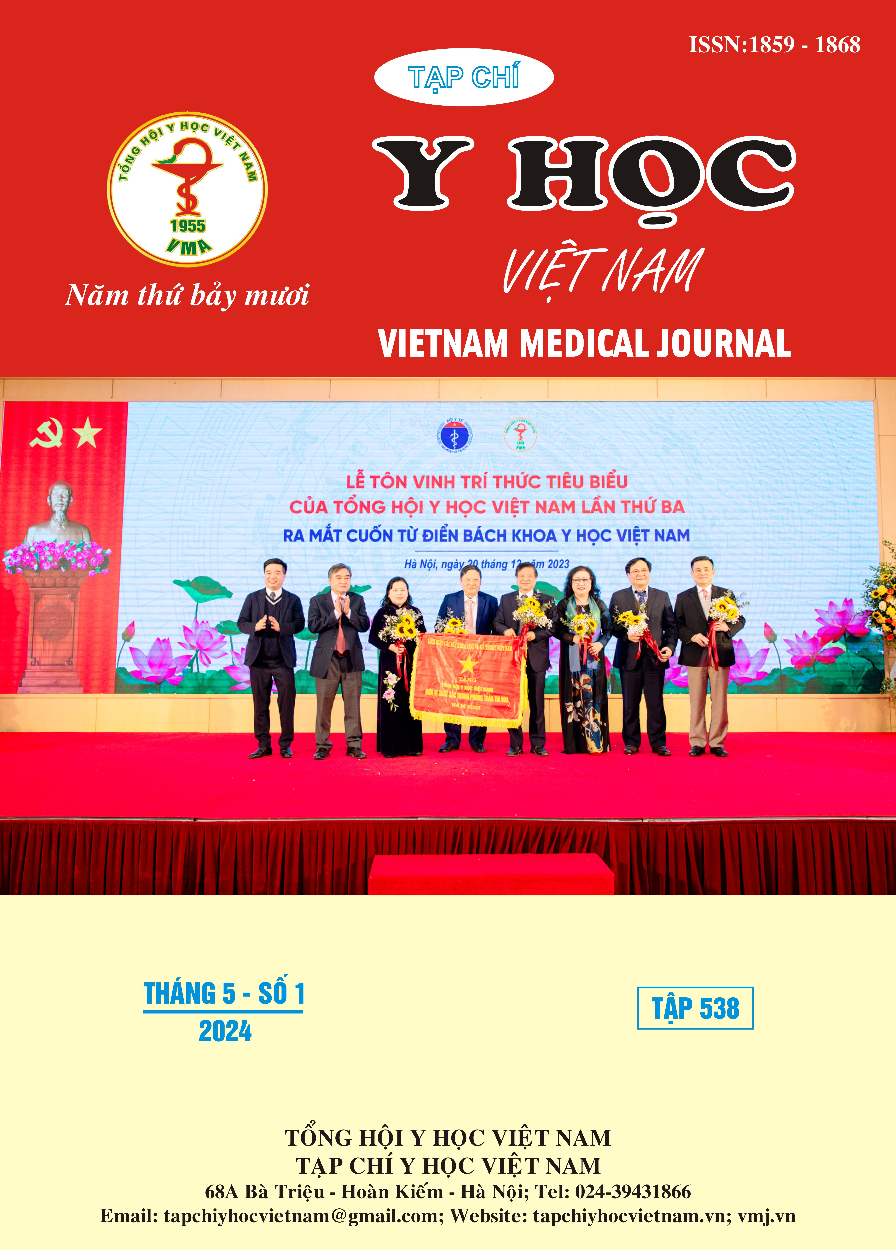ANTIMICROBIAL RESISTANCE PATTERNS OF NEISSERIA GONORRHEAE AT THE NATIONAL HOSPITAL OF DERMATOLOGY AND VENEREOLOGY IN 2022
Main Article Content
Abstract
Background: Gonorrhea, caused by Neisseria gonorrhoeae, presents a growing public health concern due to the escalating antimicrobial resistance. Methods: To assess the extent of drug resistance in Neisseria gonorrhoeae, we conducted a cross-sectional study involving patients with positive cultures for the bacterium at the National Hospital of Dermatology and Venereology in 2022. Results: 85.0% of the cases were male, and 51.7% of infections belonged to the under-30 age group (n=60). Resistance to ciprofloxacin and decreased susceptibility to penicillin were observed in all isolates, while the rate of decreased tetracycline susceptibility was 98.3%. Additionally, 5.0% of isolates demonstrated non-susceptibility to azithromycin, and 1.7% were non-susceptible to cefixime, ceftriaxone, and cefotaxime. Notably, no isolate displayed resistance to spectinomycin. Conclusion: Cefixime, ceftriaxone, cefotaxime, and spectinomycin retained their high efficacy as treatments for gonorrhea. However, the use of azithromycin for gonococcal therapy warrants careful consideration. These findings emphasize the importance of continuous surveillance of antimicrobial resistance patterns in Neisseria gonorrhoeae.
Article Details
Keywords
Neisseria gonorrhoeae, Antimicrobial resistance.
References
2. Nguyễn Trường Sơn, Nguyễn Nam Liên, Phan Lê Thu Hằng. Niên giám thống kê Y tế 2018. Published online 2018.
3. Trịnh Minh Trang, Phạm Thị Minh Phương, H.Rogie van Doorn, Phạm Thị Lan. Đặc điểm lâm sàng, yếu tố liên quan bệnh lậu, độ nhạy cảm với kháng sinh của vi khuẩn lậu. Tạp Chí Nghiên Cứu Y Học. 2020;132(8):11-20.
4. Centers for Disease Control and Prevention (CDC). Sexually Transmitted Disease Surveillance, 2020. Published October 17, 2022. Accessed February 12, 2023.
5. Chen Y, Gong Y, Yang T, et al. Antimicrobial resistance in Neisseria gonorrhoeae in China: a meta-analysis. BMC Infect Dis. 2016;16:108.
6. Adamson PC, Van Le H, Le HHL, Le GM, Nguyen TV, Klausner JD. Trends in antimicrobial resistance in Neisseria gonorrhoeae in Hanoi, Vietnam, 2017-2019. BMC Infect Dis. 2020;20(1):809.
7. Hadad R, Golparian D, Velicko I, et al. First National Genomic Epidemiological Study of Neisseria gonorrhoeae Strains Spreading Across Sweden in 2016. Front Microbiol. 2022;12:820998.
8. World Health Organization (WHO). Proportion of isolates tested (WHO-GASP). Accessed April 23, 2023.


